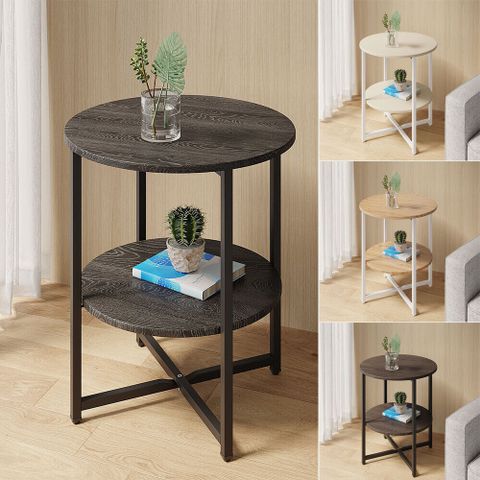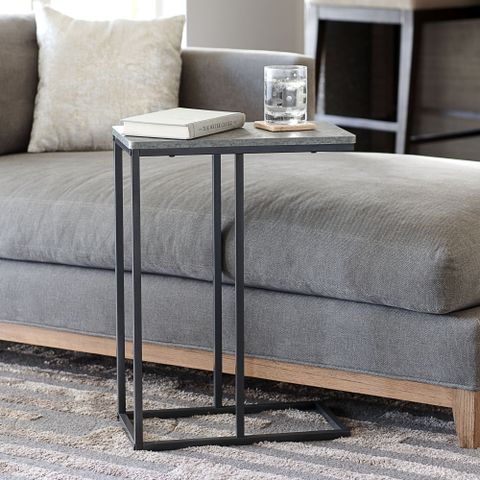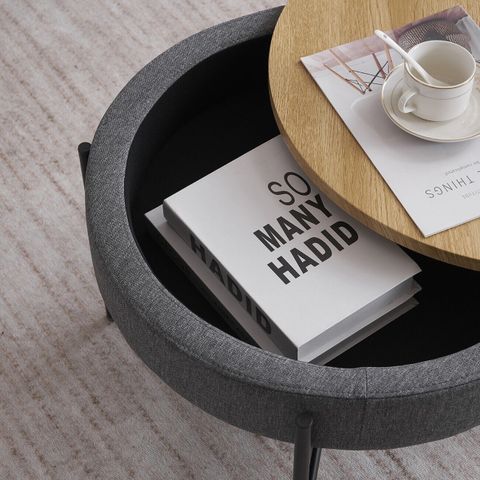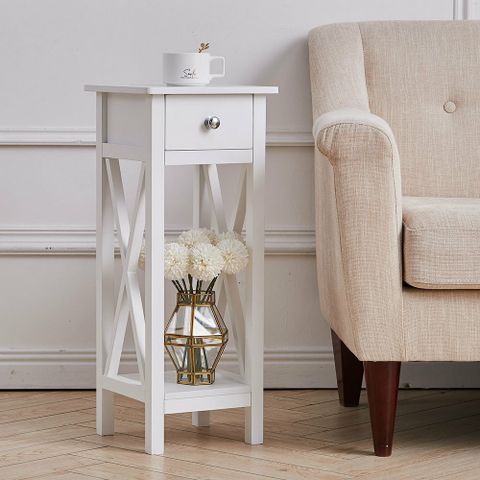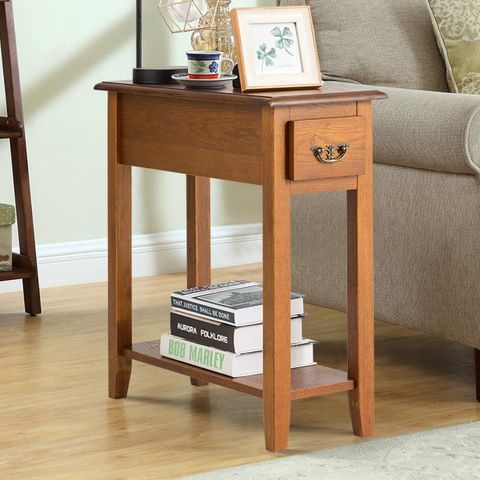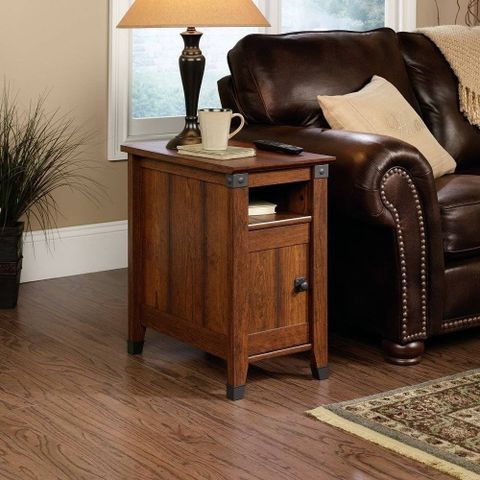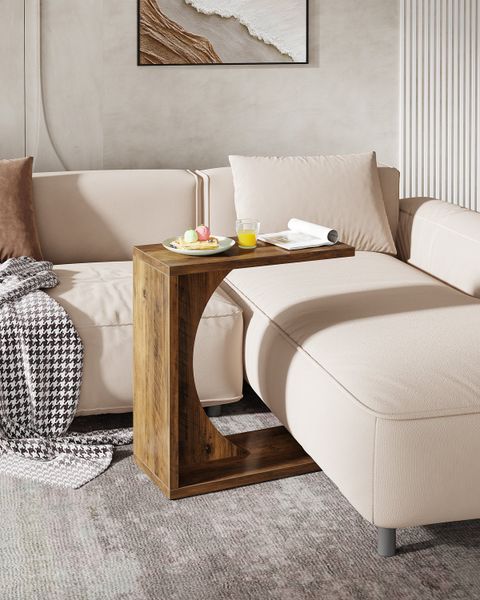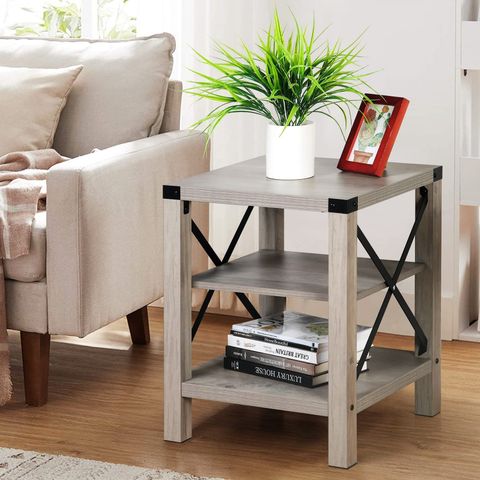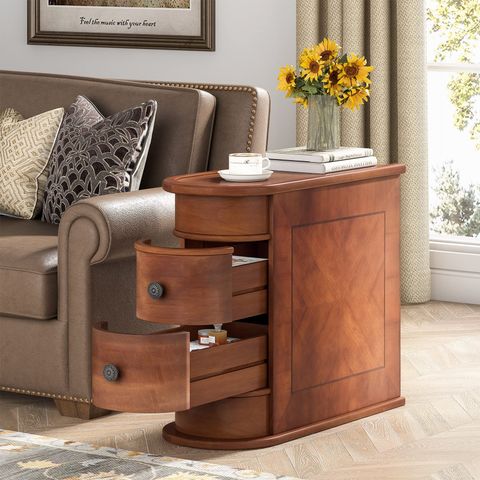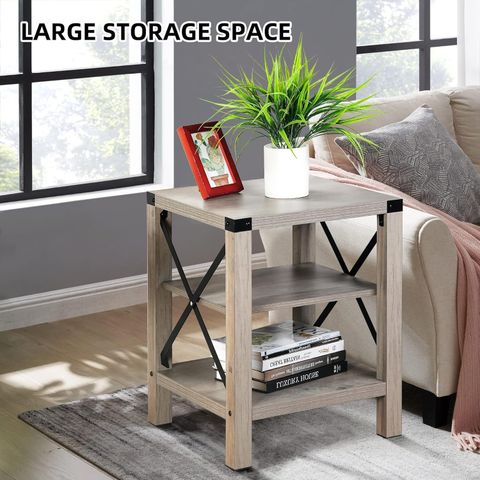We all have that spot next to the sofa, right? It’s where drinks land, remotes disappear, and sometimes, a forgotten book rests. But what if that often-overlooked space could be a stage for something more? Something that not only serves a purpose but also elevates your entire living room’s look and feel? That’s where the humble, yet mighty, sofa-side end table comes into play. It’s not just furniture; it’s a functional accent piece that can truly make a difference.
Think about your living room. You’ve probably spent ages choosing the perfect sofa, maybe agonized over paint colors, and curated your throw pillows. But have you given much thought to the little tables flanking your sofa? These sofa-side end tables, often relegated to holding just a lamp and a coaster, are actually powerhouses of potential. They can be the key to unlocking better flow, adding much-needed storage, and injecting a dose of your personal style into the space. So, let’s explore how these seemingly simple pieces can bring about a significant transformation, one table at a time.
Functionality First: What Can Your End Table Do?
Before you fall in love with a table’s looks, consider its job. What do you need it to accomplish? For many, it’s about convenience. A place to set down your morning coffee, a spot for your phone and keys, or a handy surface for that book you’re currently devouring. Some end tables come with built-in drawers or shelves, offering valuable storage for things you want to keep out of sight, like chargers, magazines, or even a cozy blanket. Others might have a lower shelf, perfect for displaying decorative items or keeping essentials within easy reach. Think about your daily routine. Do you often find yourself searching for a place to put things? An end table with the right features can solve that problem in a stylish way.
Style Savvy: Matching Your End Table to Your Decor
Now for the fun part – style. Your end table is a fantastic opportunity to express your personality and complement your existing decor. Is your living room modern and minimalist? Consider a sleek metal or glass table with clean lines. Lean towards a more rustic or farmhouse vibe? A reclaimed wood or distressed finish table might be just the ticket. For a traditional or transitional space, a classic wooden table with elegant detailing can provide a sophisticated touch. Don’t be afraid to mix and match materials, either. A wood table with metal legs, for instance, can add an interesting textural contrast. The key is to choose a table that feels cohesive with the rest of your room, acting as a natural extension of your style.
Size and Scale Matter: Finding the Perfect Fit
One of the most crucial aspects of selecting an end table is getting the size and scale right. A table that’s too big can make the space feel cramped and cluttered, while one that’s too small might look lost and insignificant. As a general guideline, an end table should be roughly the same height as your sofa’s armrest, or perhaps an inch or two taller or shorter. In terms of width, it should be proportionate to the seating it’s next to. You want enough surface area to be useful, but not so much that it overpowers the sofa. Measure your space carefully before you shop. Consider the surrounding furniture too – you don’t want the end table to block pathways or feel too close to other pieces. A well-proportioned table creates a sense of balance and harmony in the room.
Material World: From Wood to Metal and Beyond
The material of your end table significantly impacts its look, feel, and durability. Wood, in its many forms – oak, walnut, pine, mango wood – offers warmth and versatility. You can find it in natural finishes, painted, or distressed to suit various styles. Metal tables, often in iron, steel, or brass, can lend a touch of industrial chic or modern elegance. Glass tops can make a space feel more open and airy, but they do require a bit more care to keep smudge-free. Stone or marble-topped tables add a touch of luxury and weight. Sometimes, a combination of materials creates the most compelling design. Think about the overall aesthetic you’re aiming for and choose a material that supports it. Also, consider the practicalities – if you have young children or pets, opting for a more durable or scratch-resistant material might be a wise decision.
Placement Perfection: Where to Put Your End Table
The name ‘sofa-side’ gives a big clue, but there’s a little more nuance to placement. Ideally, an end table should be within easy reach of someone sitting on the sofa. This means positioning it directly beside the sofa’s armrest. If you have a sectional sofa, you might place tables at each end or in the corner where two sections meet. Don’t forget about the other side of your sofa, or even the space between two chairs. If you have a particularly long sofa, you might even consider using two matching end tables, one on each side, to create a symmetrical and balanced look. Ensure the placement doesn’t obstruct traffic flow through the room. A table that’s too far forward can become a tripping hazard, while one tucked too far back might be inconvenient to use.
Accessorizing Your End Table: The Finishing Touches
Once your end table is in place, it’s time to bring it to life with accessories. This is where you can really let your creativity shine. A lamp is a classic choice, providing ambient lighting and a focal point. Consider a table lamp that matches your room’s style. A stack of a few favorite books or a stylish tray can corral smaller items like remotes and coasters. A small plant or a vase with fresh flowers can add a touch of nature and color. Decorative objects, like sculptures or framed photos, can inject personality. Remember the principle of ‘less is more.’ You don’t want to overcrowd the surface. Aim for a balance of height, texture, and color to create an appealing vignette. Think of it as a mini-still life that adds character to your seating area.
So, there you have it. That seemingly simple sofa-side end table is a true workhorse in disguise. It’s a functional necessity that can also be a stylish statement piece. By considering its purpose, matching it to your decor, getting the size and scale right, choosing the right material, placing it wisely, and adding those perfect finishing touches, you can truly transform your living room. It’s a small change, but one that brings big rewards in terms of both utility and aesthetic appeal. Don’t underestimate the power of these little tables – they’re waiting to help you create a more comfortable, stylish, and inviting space, one sofa-side placement at a time.

